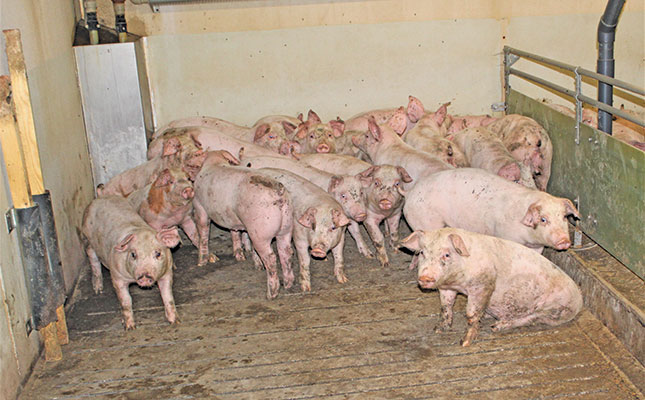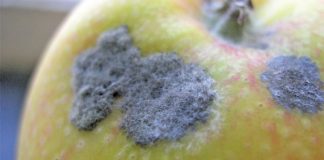
Photo: Lindi Botha
For years, the inclusion of zinc oxide in pigs’ diets has been considered crucial in controlling harmful organisms such as E. coli. While this inorganic compound’s effectiveness at eliminating diseases is undisputed, there are downsides to using it.
Dr Jules Taylor-Pickard, a nutritionist at Alltech, notes that zinc also ends up eliminating beneficial bacteria that help to increase production and are crucial to overall pig health. There is also evidence that zinc increases antibiotic resistance and heavy-metal tolerance, as the microbial population in the gut is disturbed.
An alternative with a proven pedigree
Fermented foods, beneficial bacteria and yeasts have made waves in human health discussions, dominating research on improving immune systems. Their positive effects on intestinal health have been proved, and now their effects on swine gut health and immune systems are reflecting the same trend.
While the effects of reducing zinc in pigs’ diets are still being studied, trials have shown that replacing zinc with fermented foods and beneficial yeasts appears to deliver far more benefits than can be achieved with zinc.
Jens Legarth, CEO of European Protein, which manufactures fermented food additives for livestock, notes that micro-organisms such as yeast, mould and bacteria aid intestinal health and help the body to absorb vitamins and minerals, as well as fight disease.
“Between 60% and 70% of immune functions are associated with the gastrointestinal tract. A balanced gut environment exists when the diversity of gut micro-organisms is tolerated well by the immune system, which then reduces inflammation events. Fermented feeds introduce beneficial bacteria that colonise the gut and are tolerated by the immune system, along with a vast array of health-promoting compounds. This all leads to the displacement of potential pathogens.”
Legarth likens this to a bus where the passengers (beneficial bacteria) take up all the seats. If other potential passengers (harmful bacteria) arrive, they find no room and are forced to move along.
Taylor-Pickard adds that 90% of diseases can be traced back to gut health and the microbiome.
“There’s a quote: ‘All diseases start in the belly and death resides in the intestine’, which puts into perspective how important gut health is for managing young pigs in particular.
“When we wean a young pig, it stops eating for a number of days, and it takes a [while] for intake to recover. During this time, the finger-like villi in the intestines are stunted.
“The villi form the wall of the gut, preventing pathogens from escaping into the bloodstream, and absorb nutrition. Stunted villi have a smaller surface area for digesting nutrients, while the epithelial cells lining the gut are damaged. [As a result], there are tight junctions [in the gut] that allow pathogens to pass through, eliciting an inflammatory response, which is energy-expensive.
So we have poor nutrient absorption and a higher risk of infection by opportunistic pathogens, leading to post-weaning diarrhoea and poor productivity,” she says.
Good gut, good health
Efficient digestion, optimal feed absorption, and a good immune system rely on a stable and diverse microbial population.
Taylor-Pickard advises a ‘seed, feed and weed’ approach to intestinal health. This means seeding the gut with beneficial micro-organisms, and feeding them to ensure they flourish and thereby weed out harmful bacteria.
“A healthy start in life can have a major long-term impact on an animal. This is why we must seed a young animal’s gastrointestinal tract with the correct bacteria right after birth. With diverse intestinal microflora now in place, animals will exhibit improved early growth, feed conversion, uniformity and survivability. The emphasis then shifts to feeding the beneficial bacteria with weak acids and enzymes, helping them to outcompete gut pathogens and reduce protein accumulation.
“Once a beneficial microfloral community and intestinal ecology are established, the villi will flourish, which is critical for health and feed efficiency. The greater the villus surface area, the more efficiently nutrients are absorbed. With a stabilised gut ecosystem, mortality rates and the need for treatment are reduced, and return on investment increases.”
Trials in swine herds receiving Actigen, an Alltech formula of beneficial yeasts, showed that the animals’ improved health resulted in reduced replacement rates and empty days.
“Piglet performance is enhanced with a healthy gut, and since their mothers are more robust as a result of greater health, they’re able to produce more and better-quality colostrum, which results in heavier, healthier pigs at weaning,” explains Taylor-Pickard.
Fermented foods have also been shown to play a crucial role in intestinal and overall health through a combination of the probiotic effect of their inherent micro-organisms, and the prebiotic benefits from the partial solubilisation of fibre.
Legarth notes another critical parameter when evaluating piglet health: the density of the gut barrier, or mucosa.
“The barrier’s most crucial task is to protect piglets from bacteria entering the bloodstream. A thick and dense barrier leaves the piglet more protected. This is a vital health measure, as the condition of the gut barrier is crucial to how well the immune system works.”
A large-scale study by the University of Copenhagen in Denmark revealed that piglets given a diet that included fermented canola experienced an increase in the density and thickness of the gut barrier as well as an eightfold increase in the development of the immune system, compared with piglets receiving zinc oxide and soya protein concentrate respectively. The study also concluded that no development of the immune system took place in zinc-fed piglets.
In addition, piglets fed a standard diet supplemented with 2,5% fermented canola and seaweed had a more diverse microbiome, fewer intraepithelial lymphocytes (indicating reduced inflammation), and less blood urea nitrogen relative to the piglets fed the unsupplemented diet.
Legarth says it was previously thought that feeding piglets fibre was counterproductive, as they could not digest it, but it has been found that non-soluble fibres function as feed for the intestinal bacteria, with advantages for gut health.
“The trial showed that piglets fed fermented canola and seaweed had more Prevotella bacteria in their gut microbiome. This type of bacteria helps digest fibrous feed, a great advantage when we want the piglets to transition to a cheaper and more fibrous feed after weaning.”
A developing gut microbiome can be modulated by feed more rapidly than an established gut microbiome. The older the sow and the higher the bacterial pressure on the farm, the longer it takes to establish a healthy gut microbiome.
Legarth explains that in young animals, microbial gut colonisation develops gradually in parallel with the immune system.
“In this way, the first bacteria colonising the gut have an advantage over later colonisers.”
The problem with modern farming, he adds, is that most sources of bacteria are eliminated in sterile environments.
“In wildlife and animals reared outside, microbial colonisation of the gastrointestinal tract comes from diverse sources such as soil, water and plants. In conventional farming, this process is hampered, as the animals are kept in a closed space and feeding is based on fixed, heat-treated formulations. Piglets therefore depend primarily upon the mother’s milk and the microbiota on her skin and nearby surroundings to obtain the right set of bacteria to develop a robust gut barrier and prepare them for the next life phase.”
Taylor-Pickard and Legarth agree that setting sows up with the right microbiomes during gestation and lactation improves the condition of newborn piglets.
“If nutrient absorption is optimised in the sow, we get better colostrum and milk production, more immunoglobulins, and better litter uniformity, since we’re effecting the microbial transfer to the progeny of farrowing,” says Taylor-Pickard.
“We can thereby improve passive immunity through the presence or enhancement of the immunoglobulins in colostrum and milk to ultimately give us better performance, better feed conversion, and better survivability of piglets.”
Legarth says the University of Copenhagen study shows that including seaweed in the diet enhances anti-inflammatory and antipathogenic capabilities.
“On average, sows fed this diet produced two to three piglets more per year, weaned piglets weighed 500g more, and suckling piglets were more uniform and viable at farrowing. The feed consumption per produced piglet also dropped by up to 15% because nutrient absorption was increased.”
Lower zinc oxide levels gradually
While the results are overwhelmingly positive, farmers choosing this alternative are advised to reduce zinc oxide gradually, as building up the optimal gut microbiome takes time. According to Legarth, it can take between six and 12 months to see results from including fermented foods in a diet.
“Many see changes after six months, but the most evident changes take place after the sow has been through two reproductive cycles. The reason is that when a sow comes into heat with a healthy microbiome, in good condition and without low-grade inflammation, she releases more eggs and gives birth to more vital piglets.”
He adds that producers with high bacterial pressure have a much greater challenge with zinc-free production. They should therefore start where their efforts can make the most difference to piglet health: with the sow, before experimenting with the weaning feed.
Healthy animals are the driving force behind profitable livestock production, and with good health starting in the gut, the crucial role of yeasts and fermented foods in achieving this ideal microbiome cannot be disputed, he says.
Email Jens Legarth at [email protected] and Dr Jules Taylor-Pickard at [email protected].











